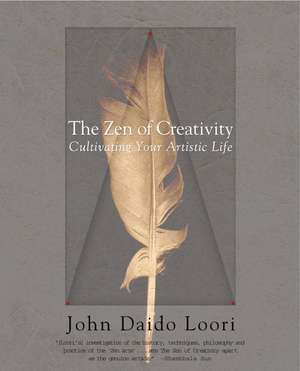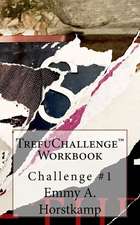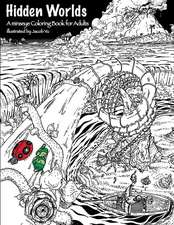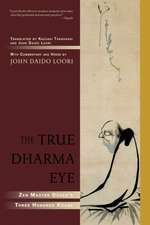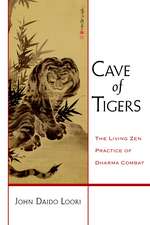The Zen of Creativity: Cultivating Your Artistic Life
Autor John Daido Loorien Limba Engleză Paperback – 30 apr 2005
Zen Buddhism is steeped in the arts. In spiritual ways, calligraphy, poetry, painting, the tea ceremony, and flower arranging can point us toward our essential, boundless nature. Brilliantly interpreting the teachings of the artless arts, Loori illuminates various elements that awaken our creativity, among them still point, the center of each moment that focuses on the tranquility within; simplicity, in which the creative process is uncluttered and unlimited, like a cloudless sky; spontaneity, a way to navigate through life without preconceptions, with a freshness in which everything becomes new; mystery, a sense of trust in the unknown; creative feedback, the systematic use of an audience to receive noncritical input about our art; art koans, exercises based on paradoxical questions that can be resolved only through artistic expression. Loori shows how these elements interpenetrate and function not only in art, but in all our endeavors.
Beautifully illustrated and punctuated with poems and reflections from Loori’s own spiritual journey, The Zen of Creativity presents a multilayered, bottomless source of insight into our creativity. Appealing equally to spiritual seekers, artists, and veteran Buddhist practitioners, this book is perfect for those wishing to discover new means of self-awareness and expression—and to restore equanimity and freedom amid the vicissitudes of our lives.
From the Hardcover edition.
Preț: 132.13 lei
Nou
Puncte Express: 198
Preț estimativ în valută:
25.28€ • 26.40$ • 20.92£
25.28€ • 26.40$ • 20.92£
Carte disponibilă
Livrare economică 14-28 martie
Preluare comenzi: 021 569.72.76
Specificații
ISBN-13: 9780345466334
ISBN-10: 0345466330
Pagini: 272
Ilustrații: THROUGHOUT
Dimensiuni: 187 x 233 x 19 mm
Greutate: 0.46 kg
Editura: BALLANTINE BOOKS
ISBN-10: 0345466330
Pagini: 272
Ilustrații: THROUGHOUT
Dimensiuni: 187 x 233 x 19 mm
Greutate: 0.46 kg
Editura: BALLANTINE BOOKS
Notă biografică
John Daido Loori is one of the most well-known and respected Zen teachers in the United States. He is a successor of the late Taizan Maezumi Roshi and has received transmission in both Soto and Rinzai lineages of Zen. He is the author of numerous books, including Mountain Record of Zen Talks, Making Love with Light, and Riding the Ox Home: Stages on the Path of Enlightenment.
Extras
Chapter 1
Melting Snow
All the way to heaven
is heaven itself.
In the fall of 1980, after I completed Zen training in Los Angeles with my teacher, Maezumi Roshi, I came to the East Coast with the intention of establishing a Zen arts center-a place where Zen training would be used as the vehicle for studying, enhancing, and cultivating a creative life.
The Zen Arts Center opened in Mount Tremper in October of 1980. Its main thrust was the practice of art within a Zen context.
Art had been a passion of mine since I was young, but its deep connection to my spiritual journey didn't become obvious until much later. I started photographing when I was ten, and by the time I'd reached my mid thirties photography had become an important part of my life. While working as a research scientist, I began teaching photography part-time at a local college. Spirituality was not in the picture-at least not overtly. The first time these two areas overlapped was in the late 1960s when I traveled to Boston from New York to see a photography exhibit titled "The Sound of One Hand," by Minor White.
I didn't yet have any sense that art might be a doorway to serious and transformative spiritual practice, but something more than good technique drew me to Minor's work. Minor was a "straight photographer": he didn't manipulate his prints during the developing process, yet his images transcended their subject. Looking at his photographs, I felt myself being pulled into another realm of consciousness. Minor's work pointed to a dynamic way of seeing, a new way of perceiving.
My life has been the poem I would have writ,
But I could not both live and utter it.
henry david thoreau
One day in 1971 I received a letter from Aperture magazine announcing a workshop that Minor was giving at the Hotchkiss School in Lakeville, Connecticut. I took one look at the price and threw the letter in the garbage. A friend saw me, and she picked it up.
"Isn't this the man you're always talking about?" she asked. I nodded. "Then why are you throwing the letter away?"
"I don't have the money to pay for it."
"Send it in, John," she said. "Something will come up."
And, miraculously, something did. A month later a tax refund that I had completely forgotten about arrived in the mail. I sent in my portfolio, along with my date and place of birth so an astrologer could determine whether this was an auspicious time for me to do the retreat. With the acceptance letter I got the workshop's reading list. It consisted of three books: Carlos Castaneda's A Separate Reality, Eugen Herrigel's Zen and the Art of Archery, and Richard Boleslavsky's Acting: The First Six Lessons. Nothing on photography. What did my astrological chart or these books have to do with photography? At the time I was making my living as a physical chemist, and my rational, highly critical mind did not take well to these requests. But I really wanted to study with Minor, so I went along with what he asked.
When I arrived at the Hotchkiss School I saw that there were sixty participants, ranging in age from eighteen to seventy. Minor greeted us as we arrived. He was a striking figure, well over six feet tall, with a flowing mane of white hair. He moved quietly, gracefully, and when he entered a space, he filled it completely.
This oceanic feeling of wonder is the
common source of religious mysticism, of
pure science and art for art's sake.
arthur koestler
The first full day of the workshop began at four in the morning. The sound of a bass drum moving down the hallway arrived without warning. It was pitch black outside. How are we going to photograph in the dark? I wondered. Drowsily, I dressed and filed outside with the others. We gathered on a grassy field and a modern dancer began to lead us through a series of exercises. Everyone was participating, including Minor.
I turned to the man next to me. "Why are we doing this? What does this have to do with photography?"
"Ssshhhhh. Just do it," he said.
I had paid hundreds of dollars to study photography with Minor, and I wasn't about to spend the week undulating in the dark! Furious, I stormed away.
Back in my room, I started to pack my things. Dawn was breaking, and the line of dancers caught my eye as I passed the window. They were spread across the length of the field. I took the camera, screwed on a telephoto lens, and began to shoot, feeling very pleased with myself. They can do whatever they want. I'm going to photograph. That thought perfectly summarized where I was at that time in my life: standing apart, looking at the world through a lens, like a voyeur.
After the morning session, a group of students led by the dance instructor came to my room to convince me to stay. "You're not giving it a chance," they said. "You're copping out." I could have defended myself, but I was moved by the fact that they even cared whether I stayed or left. And deep down I knew that I couldn't just walk away. I wanted so badly to learn to see the way Minor did, to photograph my subjects in a way that didn't render them lifeless and two-dimensional.
As the days unfolded I woke up before dawn, meditated, and danced with everyone else. We attended lectures and did various exercises. We didn't even touch our cameras for the first day or two. Then Minor began to challenge us with different questions that dealt with our way of seeing ourselves and the universe, questions that needed to be resolved visually.
One of these assignments was a turning point for me. On day four of the workshop, Minor told us to photograph our essence. "Don't photograph your personality," he explained. "Try to go deep into the core of your being. Photograph who you really are."
Who I really am? I was absorbed in this question as I walked outside and sat in the field underneath a sprawling oak. I suddenly started sobbing. I couldn't stop, and I had no idea why. Somehow, that seemed terribly funny, and I began to laugh. I kept laughing until I was exhausted. Who am I? That question repeated itself over and over in my mind.
Back in my room, I packed my 4 ¥ 5 camera and a small backpack, prepared to stay out overnight in order to resolve this question. I set off for the nearby forest and began wandering. Minor's instructions echoed in my mind: Venture into the landscape without expectations. Let your subject find you. When you approach it, you will feel resonance, a sense of recognition. If, when you move away, the resonance fades, or if it gets stronger as you approach, you'll know you have found your subject. Sit with your subject and wait for your presence to be acknowledged. Don't try to make a photograph, but let your intuition indicate the right moment to release the shutter. If, after you've made an exposure, you feel a sense of completion, bow and let go of the subject and your connection to it. Otherwise, continue photographing until you feel the process is complete.
The state of mind of the photographer while
creating is a blank. . . . [but] It is a very active state of mind really, a very receptive state of mind, ready
at an instant to grasp an image, yet with no image pre-formed in it at any time.
minor white
Minor's language was foreign to me. I had no idea what this resonance was supposed to feel like, or how I would recognize when my subject acknowledged me. I didn't know if I could feel a sense of completion, or what I was supposed to do to "let go." Yet, surprisingly, I was willing to trust Minor, and the process. Somehow, I intuited that I could do what he had asked. More importantly, I knew that I had to do it in order to answer the question.
Around noon I came to a beautiful gully and decided to rest. I built a small fire, leaned against a rock, and was eating my lunch when I sensed someone's presence nearby. I looked up and saw the elegant figure of a man standing at the top of the ridge, the sun glowing behind him. He climbed down the rocks toward me, and I recognized John, a modern dancer and one of Minor's senior students. I had been impressed with John since the beginning of the retreat. He would often photograph as he danced, leaping and turning in the air with a Polaroid camera in his hand. Like Minor's work, John's photos made me realize that there were other ways to
photograph, other ways to see that were not so rational or linear.
I invited John to join me and offered him a cup of tea. As soon as he sat down, I started jabbering about anything and everything. In the middle of my rant he abruptly whispered, "Listen! Listen!" In the silence I heard a faint tinkling. Intrigued, I picked up my camera and headed off toward the sound, leaving John behind. I soon found myself in thick, dark woods. A brook trickled through the mossy rocks. Light streamed through the trees; bright reflections danced on the water in the surrounding darkness. Enchanted by the scene, I stayed by the brook for an hour or more, completing several photographs in a slow, methodical, almost meditative way.
When I returned to the gully John was gone, and there was no sign of him ever having been there. The cup of tea I had offered him was still in my knapsack, completely clean. There were no crumbs on the ground, no traces of him anywhere. It was as if our meeting had never happened-in fact, I wasn't sure that it had.
I packed up and continued my wandering. As the sun passed the zenith and began its descent across the sky, the light that filtered through the canopy of trees became softer and warmer. None of the photographs I had taken so far seemed to touch the essence toward which Minor had pointed me.
Again, I heard Minor's voice in my head. Photograph who you really are. I was looking at the ground, navigating over big roots with the heavy camera on my shoulder. I looked up and saw a tree standing a few feet away and off to my right which riveted my attention. It was an ancient hardwood with a gnarled trunk. Something about the way the light spilled over it drew me nearer. I approached it, bowed, set up my camera, and sat down on the ground next to the tripod, waiting for my presence to be acknowledged. I sat as still and quietly as I could, with my hand on the shutter release. Briefly, I wondered how I was supposed to know when to make the exposure. That's the last thing I remember.
Hours later, I realized I was shivering. The sun had set behind the mountains and the afternoon had turned cold. Somehow, time had vanished for me. I slowly rose, aware that something deep inside me had shifted. The questions I had been struggling with during the workshop-all of my life, for that matter-had melted away. I felt buoyant and joyful. The world was right; I was right. I didn't even know whether I had taken a photograph of the old tree, but at that point it didn't really matter.
I headed back to the school, for an appointment I had with Minor to discuss my work. He was sitting on the porch outside his room, waiting for me. Settling next to him, the list of questions I had prepared earlier in the week no longer seemed relevant.
He looked at me and said, "You had a good day, didn't you?" I smiled, and he smiled, too.
"What would you like to talk about?" he asked.
"Honestly," I said, "I don't have anything to say."
"Good," he replied. "Then let's just sit here together."
The days that followed deepened my appreciation for Minor and his teachings. Something had opened in me, and the techniques and activities of the workshop started to make sense. Minor was guiding us to go beyond simply seeing images. He was inviting us to feel, smell, and taste them. He was teaching us how to be photography.
As I was leaving, I felt an overwhelming sense of gratitude for Minor's teaching that I didn't know how to requite. When I said this to Minor, he simply said, "You're a teacher, right?" I nodded. "Well, then teach."
For a while this is what I did. I was very productive at first. I was seeing and photographing in a new way, and the workshops I taught around the country reflected a deeper understanding of myself as a photographer. But as the months passed, this new way of seeing and the feeling of peace that accompanied it receded, and my feelings of wholeness and well-being began to fade.
I tried to regain my balance by re-creating everything we had done during Minor's workshop. I read books on religion, spirituality, and philosophy. I stood on my head, ate vegetarian food, and meditated. I listened to the music that Minor had played for us. I kept coming back to the questions: What had allowed the world to disappear so completely when I sat in front of the tree? Why did everything feel so right after that? Why did I feel at peace? And how did everything become cloudy again?
Do not go where the path may lead, go instead
where there is no path and leave a trail.
ralph waldo emerson
I then set out on a crooked path to find the answers to these questions, not knowing that this path would lead me to the mystical tradition of Zen and a new way of understanding art. But the first step on this path was to see if Minor could help me to make sense of what I was going through, so that's where I started. Feeling a little nervous, I gave him a call. Without hesitation, without even asking me for a reason or even pausing to think it over, Minor responded. "Come," he said generously, "we can have dinner and talk."
Minor's large two-story house in Cambridge was meticulously clean and sparsely furnished. It was sectioned into dormitories and studios for Minor's apprentices, including a state-of-the-art darkroom facility equipped for archival printing and framing. Minor divided his time between teaching photography at MIT and maintaining this apprenticeship program, reminiscent of the traditional way in which artists and artisans learned art from a master. The training was rigorous and experiential, an extension of what I had encountered at the workshop.
From the Hardcover edition.
Melting Snow
All the way to heaven
is heaven itself.
In the fall of 1980, after I completed Zen training in Los Angeles with my teacher, Maezumi Roshi, I came to the East Coast with the intention of establishing a Zen arts center-a place where Zen training would be used as the vehicle for studying, enhancing, and cultivating a creative life.
The Zen Arts Center opened in Mount Tremper in October of 1980. Its main thrust was the practice of art within a Zen context.
Art had been a passion of mine since I was young, but its deep connection to my spiritual journey didn't become obvious until much later. I started photographing when I was ten, and by the time I'd reached my mid thirties photography had become an important part of my life. While working as a research scientist, I began teaching photography part-time at a local college. Spirituality was not in the picture-at least not overtly. The first time these two areas overlapped was in the late 1960s when I traveled to Boston from New York to see a photography exhibit titled "The Sound of One Hand," by Minor White.
I didn't yet have any sense that art might be a doorway to serious and transformative spiritual practice, but something more than good technique drew me to Minor's work. Minor was a "straight photographer": he didn't manipulate his prints during the developing process, yet his images transcended their subject. Looking at his photographs, I felt myself being pulled into another realm of consciousness. Minor's work pointed to a dynamic way of seeing, a new way of perceiving.
My life has been the poem I would have writ,
But I could not both live and utter it.
henry david thoreau
One day in 1971 I received a letter from Aperture magazine announcing a workshop that Minor was giving at the Hotchkiss School in Lakeville, Connecticut. I took one look at the price and threw the letter in the garbage. A friend saw me, and she picked it up.
"Isn't this the man you're always talking about?" she asked. I nodded. "Then why are you throwing the letter away?"
"I don't have the money to pay for it."
"Send it in, John," she said. "Something will come up."
And, miraculously, something did. A month later a tax refund that I had completely forgotten about arrived in the mail. I sent in my portfolio, along with my date and place of birth so an astrologer could determine whether this was an auspicious time for me to do the retreat. With the acceptance letter I got the workshop's reading list. It consisted of three books: Carlos Castaneda's A Separate Reality, Eugen Herrigel's Zen and the Art of Archery, and Richard Boleslavsky's Acting: The First Six Lessons. Nothing on photography. What did my astrological chart or these books have to do with photography? At the time I was making my living as a physical chemist, and my rational, highly critical mind did not take well to these requests. But I really wanted to study with Minor, so I went along with what he asked.
When I arrived at the Hotchkiss School I saw that there were sixty participants, ranging in age from eighteen to seventy. Minor greeted us as we arrived. He was a striking figure, well over six feet tall, with a flowing mane of white hair. He moved quietly, gracefully, and when he entered a space, he filled it completely.
This oceanic feeling of wonder is the
common source of religious mysticism, of
pure science and art for art's sake.
arthur koestler
The first full day of the workshop began at four in the morning. The sound of a bass drum moving down the hallway arrived without warning. It was pitch black outside. How are we going to photograph in the dark? I wondered. Drowsily, I dressed and filed outside with the others. We gathered on a grassy field and a modern dancer began to lead us through a series of exercises. Everyone was participating, including Minor.
I turned to the man next to me. "Why are we doing this? What does this have to do with photography?"
"Ssshhhhh. Just do it," he said.
I had paid hundreds of dollars to study photography with Minor, and I wasn't about to spend the week undulating in the dark! Furious, I stormed away.
Back in my room, I started to pack my things. Dawn was breaking, and the line of dancers caught my eye as I passed the window. They were spread across the length of the field. I took the camera, screwed on a telephoto lens, and began to shoot, feeling very pleased with myself. They can do whatever they want. I'm going to photograph. That thought perfectly summarized where I was at that time in my life: standing apart, looking at the world through a lens, like a voyeur.
After the morning session, a group of students led by the dance instructor came to my room to convince me to stay. "You're not giving it a chance," they said. "You're copping out." I could have defended myself, but I was moved by the fact that they even cared whether I stayed or left. And deep down I knew that I couldn't just walk away. I wanted so badly to learn to see the way Minor did, to photograph my subjects in a way that didn't render them lifeless and two-dimensional.
As the days unfolded I woke up before dawn, meditated, and danced with everyone else. We attended lectures and did various exercises. We didn't even touch our cameras for the first day or two. Then Minor began to challenge us with different questions that dealt with our way of seeing ourselves and the universe, questions that needed to be resolved visually.
One of these assignments was a turning point for me. On day four of the workshop, Minor told us to photograph our essence. "Don't photograph your personality," he explained. "Try to go deep into the core of your being. Photograph who you really are."
Who I really am? I was absorbed in this question as I walked outside and sat in the field underneath a sprawling oak. I suddenly started sobbing. I couldn't stop, and I had no idea why. Somehow, that seemed terribly funny, and I began to laugh. I kept laughing until I was exhausted. Who am I? That question repeated itself over and over in my mind.
Back in my room, I packed my 4 ¥ 5 camera and a small backpack, prepared to stay out overnight in order to resolve this question. I set off for the nearby forest and began wandering. Minor's instructions echoed in my mind: Venture into the landscape without expectations. Let your subject find you. When you approach it, you will feel resonance, a sense of recognition. If, when you move away, the resonance fades, or if it gets stronger as you approach, you'll know you have found your subject. Sit with your subject and wait for your presence to be acknowledged. Don't try to make a photograph, but let your intuition indicate the right moment to release the shutter. If, after you've made an exposure, you feel a sense of completion, bow and let go of the subject and your connection to it. Otherwise, continue photographing until you feel the process is complete.
The state of mind of the photographer while
creating is a blank. . . . [but] It is a very active state of mind really, a very receptive state of mind, ready
at an instant to grasp an image, yet with no image pre-formed in it at any time.
minor white
Minor's language was foreign to me. I had no idea what this resonance was supposed to feel like, or how I would recognize when my subject acknowledged me. I didn't know if I could feel a sense of completion, or what I was supposed to do to "let go." Yet, surprisingly, I was willing to trust Minor, and the process. Somehow, I intuited that I could do what he had asked. More importantly, I knew that I had to do it in order to answer the question.
Around noon I came to a beautiful gully and decided to rest. I built a small fire, leaned against a rock, and was eating my lunch when I sensed someone's presence nearby. I looked up and saw the elegant figure of a man standing at the top of the ridge, the sun glowing behind him. He climbed down the rocks toward me, and I recognized John, a modern dancer and one of Minor's senior students. I had been impressed with John since the beginning of the retreat. He would often photograph as he danced, leaping and turning in the air with a Polaroid camera in his hand. Like Minor's work, John's photos made me realize that there were other ways to
photograph, other ways to see that were not so rational or linear.
I invited John to join me and offered him a cup of tea. As soon as he sat down, I started jabbering about anything and everything. In the middle of my rant he abruptly whispered, "Listen! Listen!" In the silence I heard a faint tinkling. Intrigued, I picked up my camera and headed off toward the sound, leaving John behind. I soon found myself in thick, dark woods. A brook trickled through the mossy rocks. Light streamed through the trees; bright reflections danced on the water in the surrounding darkness. Enchanted by the scene, I stayed by the brook for an hour or more, completing several photographs in a slow, methodical, almost meditative way.
When I returned to the gully John was gone, and there was no sign of him ever having been there. The cup of tea I had offered him was still in my knapsack, completely clean. There were no crumbs on the ground, no traces of him anywhere. It was as if our meeting had never happened-in fact, I wasn't sure that it had.
I packed up and continued my wandering. As the sun passed the zenith and began its descent across the sky, the light that filtered through the canopy of trees became softer and warmer. None of the photographs I had taken so far seemed to touch the essence toward which Minor had pointed me.
Again, I heard Minor's voice in my head. Photograph who you really are. I was looking at the ground, navigating over big roots with the heavy camera on my shoulder. I looked up and saw a tree standing a few feet away and off to my right which riveted my attention. It was an ancient hardwood with a gnarled trunk. Something about the way the light spilled over it drew me nearer. I approached it, bowed, set up my camera, and sat down on the ground next to the tripod, waiting for my presence to be acknowledged. I sat as still and quietly as I could, with my hand on the shutter release. Briefly, I wondered how I was supposed to know when to make the exposure. That's the last thing I remember.
Hours later, I realized I was shivering. The sun had set behind the mountains and the afternoon had turned cold. Somehow, time had vanished for me. I slowly rose, aware that something deep inside me had shifted. The questions I had been struggling with during the workshop-all of my life, for that matter-had melted away. I felt buoyant and joyful. The world was right; I was right. I didn't even know whether I had taken a photograph of the old tree, but at that point it didn't really matter.
I headed back to the school, for an appointment I had with Minor to discuss my work. He was sitting on the porch outside his room, waiting for me. Settling next to him, the list of questions I had prepared earlier in the week no longer seemed relevant.
He looked at me and said, "You had a good day, didn't you?" I smiled, and he smiled, too.
"What would you like to talk about?" he asked.
"Honestly," I said, "I don't have anything to say."
"Good," he replied. "Then let's just sit here together."
The days that followed deepened my appreciation for Minor and his teachings. Something had opened in me, and the techniques and activities of the workshop started to make sense. Minor was guiding us to go beyond simply seeing images. He was inviting us to feel, smell, and taste them. He was teaching us how to be photography.
As I was leaving, I felt an overwhelming sense of gratitude for Minor's teaching that I didn't know how to requite. When I said this to Minor, he simply said, "You're a teacher, right?" I nodded. "Well, then teach."
For a while this is what I did. I was very productive at first. I was seeing and photographing in a new way, and the workshops I taught around the country reflected a deeper understanding of myself as a photographer. But as the months passed, this new way of seeing and the feeling of peace that accompanied it receded, and my feelings of wholeness and well-being began to fade.
I tried to regain my balance by re-creating everything we had done during Minor's workshop. I read books on religion, spirituality, and philosophy. I stood on my head, ate vegetarian food, and meditated. I listened to the music that Minor had played for us. I kept coming back to the questions: What had allowed the world to disappear so completely when I sat in front of the tree? Why did everything feel so right after that? Why did I feel at peace? And how did everything become cloudy again?
Do not go where the path may lead, go instead
where there is no path and leave a trail.
ralph waldo emerson
I then set out on a crooked path to find the answers to these questions, not knowing that this path would lead me to the mystical tradition of Zen and a new way of understanding art. But the first step on this path was to see if Minor could help me to make sense of what I was going through, so that's where I started. Feeling a little nervous, I gave him a call. Without hesitation, without even asking me for a reason or even pausing to think it over, Minor responded. "Come," he said generously, "we can have dinner and talk."
Minor's large two-story house in Cambridge was meticulously clean and sparsely furnished. It was sectioned into dormitories and studios for Minor's apprentices, including a state-of-the-art darkroom facility equipped for archival printing and framing. Minor divided his time between teaching photography at MIT and maintaining this apprenticeship program, reminiscent of the traditional way in which artists and artisans learned art from a master. The training was rigorous and experiential, an extension of what I had encountered at the workshop.
From the Hardcover edition.
Recenzii
“A well-written, wise, insightful book on creativity and Zen, a subject made all the more intriguing and persuasive by Daido Loori’s long experience as a student and teacher in both. The text is enhanced by fine Zen dialogues and stories, poems, koan, photographs, and illustrations as well as apt, stimulating quotations from many writers and Zen teachers. An altogether excellent book.”
—PETER MATTHIESSEN (Muryo Roshi)
“Zen is the immediate suchness and spontaneity of life, a creativity that is art itself. John Daido Loori, one of the truly great American Zen masters, has given us a simple yet profound guide to art, creativity, and life itself—for they all spring from the same source, the same ordinary magic of this and every moment. The Zen of Creativity is a rare, elegant, beautiful book, highly recommended.”
—KEN WILBER, author of A Brief History of Everything
From the Hardcover edition.
—PETER MATTHIESSEN (Muryo Roshi)
“Zen is the immediate suchness and spontaneity of life, a creativity that is art itself. John Daido Loori, one of the truly great American Zen masters, has given us a simple yet profound guide to art, creativity, and life itself—for they all spring from the same source, the same ordinary magic of this and every moment. The Zen of Creativity is a rare, elegant, beautiful book, highly recommended.”
—KEN WILBER, author of A Brief History of Everything
From the Hardcover edition.
Descriere
American Zen master Loori presents a book that taps the principles of the Zen arts and aesthetic as a means to unlock creativity and discover self-awareness and expression.
